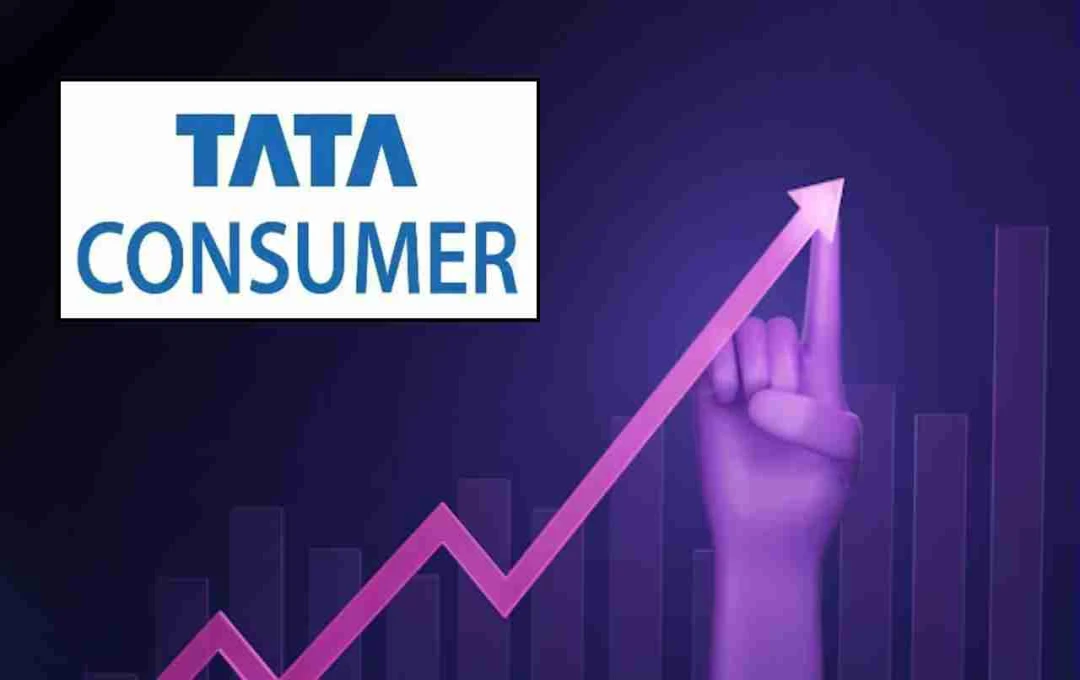Tata Group's consumer unit, Tata Consumer Products, has released its results for the first quarter of fiscal year 2026. The company reported a net profit of ₹334 crore between April and June 2025, which is approximately 15 percent higher than the same quarter last year. The company's total income, or operational revenue, also increased by 10 percent to reach ₹4,778.91 crore.
Profit Increased but Performance Slightly Behind Expectations
Tata Consumer reported a net profit of ₹290 crore in the first quarter of last year. While there has been an increase this time, it is slightly below street expectations. Experts believed that both the company's profit and revenue could have been higher. However, raw material prices and weather-related challenges put pressure on the company's margins.
The company's revenue was slightly lower than the estimate of ₹4,849 crore, but showed good growth compared to ₹4,352 crore in the previous quarter.
Standalone Profit Jumps Significantly, Dividend Income Provides Support

In the quarter ended June 30, the company's standalone net profit was recorded at ₹714 crore, compared to ₹185 crore in the same period a year ago. This significant increase was largely contributed by a dividend of ₹464 crore received from its subsidiaries.
Standalone revenue also increased by 10 percent to ₹3,529 crore. The company stated that this figure was achieved due to increased sales of tea and salt in the domestic market.
Impact of Rising Costs on Business, EBITDA Declines
The company's EBITDA, or Earnings Before Interest, Tax, Depreciation, and Amortization, stood at ₹615 crore this quarter. This is about 8 percent lower compared to last year. The company stated that this impact was due to the increase in tea prices in India and the fall in prices in the unbranded coffee business.
The increase in input costs is affecting the performance of the company's branded products such as Tata Tea and Tata Coffee. Rising tea and coffee prices in the international market are also putting pressure on margins.
Indian Business Profit Falls, International Segment Also Weak
The company reported that its net profit in India was ₹291 crore this quarter, which is 10 percent lower compared to a year ago. At the same time, the profit of the international business also fell by 11 percent to ₹156 crore.
During this period, Tata Consumer also lost 80 basis points of market share in its tea brand category. However, the company says that tea prices are now stable and demand is expected to improve.
Indian Business Supported by Sales of Tea and Salt
According to the press release issued by the company, good growth was recorded in the sales of packaged beverages and staple products in India. In particular, the tea and salt categories saw double-digit growth. The performance of the company's food brand 'Tata Sampann' was also satisfactory.
Sales in the ready-to-drink (RTD) segment were slightly affected, which was attributed to irregular rainfall during the season. Despite this, the company recorded a volume growth of 3 percent.
Tremendous Jump in Coffee Segment, Growth in International Market Too

Tata Consumer reported a revenue growth of 67 percent in the coffee segment within India. The company believes that changing lifestyles and a shift towards premium brands are major reasons behind this.
Internationally, the company has also achieved revenue growth of 5 percent in CC (Constant Currency) terms. The company believes that the presence in foreign markets remains b due to the Tata and Tetley brands.
Multi-Brand Strategy and Expansion Plans to Continue
During this period, the company also clarified that its focus will remain on promoting the multi-brand portfolio. The company is continuously investing in brands such as Tata Tea, Tata Coffee, Himalayan, Tata Sampann and Tetley. Along with this, the plan to increase reach in rural markets and smaller cities is also ongoing.
The company is also focusing on strengthening its e-commerce and direct-to-customer channels in order to keep pace with changing consumer behavior.














